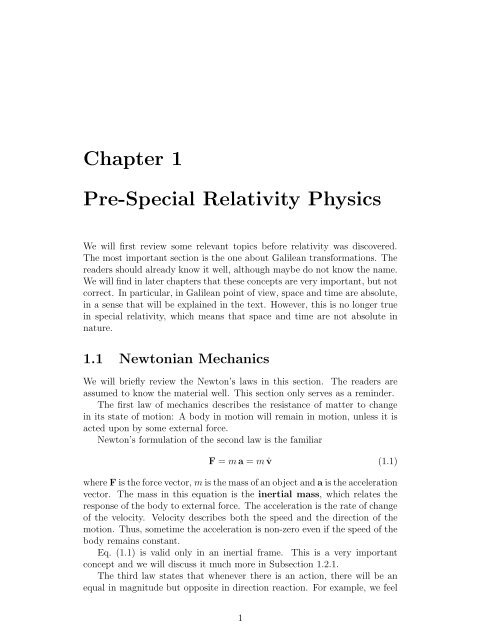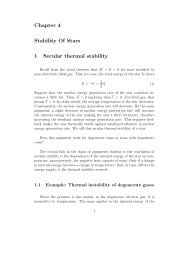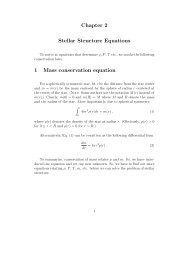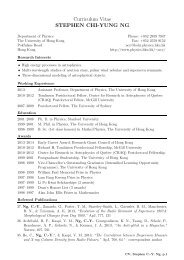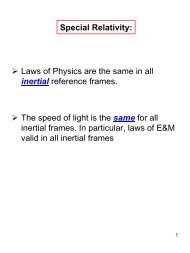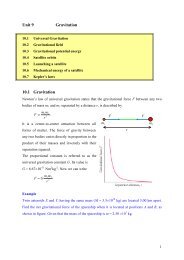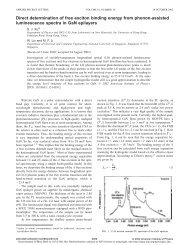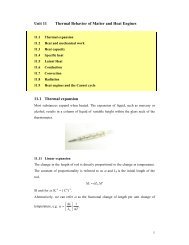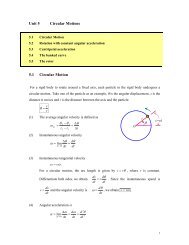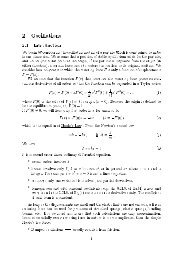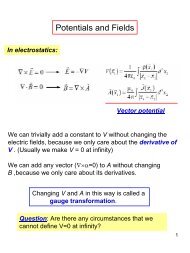here - Department of Physics, HKU
here - Department of Physics, HKU
here - Department of Physics, HKU
You also want an ePaper? Increase the reach of your titles
YUMPU automatically turns print PDFs into web optimized ePapers that Google loves.
Chapter 1<br />
Pre-Special Relativity <strong>Physics</strong><br />
We will first review some relevant topics before relativity was discovered.<br />
The most important section is the one about Galilean transformations. The<br />
readers should already know it well, although maybe do not know the name.<br />
We will find in later chapters that these concepts are very important, but not<br />
correct. In particular, in Galilean point <strong>of</strong> view, space and time are absolute,<br />
in a sense that will be explained in the text. However, this is no longer true<br />
in special relativity, which means that space and time are not absolute in<br />
nature.<br />
1.1 Newtonian Mechanics<br />
We will briefly review the Newton’s laws in this section. The readers are<br />
assumed to know the material well. This section only serves as a reminder.<br />
The first law <strong>of</strong> mechanics describes the resistance <strong>of</strong> matter to change<br />
in its state <strong>of</strong> motion: A body in motion will remain in motion, unless it is<br />
acted upon by some external force.<br />
Newton’s formulation <strong>of</strong> the second law is the familiar<br />
F = ma = m ˙v (1.1)<br />
w<strong>here</strong> F is the force vector, m is the mass <strong>of</strong> an object and a is the acceleration<br />
vector. The mass in this equation is the inertial mass, which relates the<br />
response <strong>of</strong> the body to external force. The acceleration is the rate <strong>of</strong> change<br />
<strong>of</strong> the velocity. Velocity describes both the speed and the direction <strong>of</strong> the<br />
motion. Thus, sometime the acceleration is non-zero even if the speed <strong>of</strong> the<br />
body remains constant.<br />
Eq. (1.1) is valid only in an inertial frame. This is a very important<br />
concept and we will discuss it much more in Subsection 1.2.1.<br />
The third law states that whenever t<strong>here</strong> is an action, t<strong>here</strong> will be an<br />
equal in magnitude but opposite in direction reaction. For example, we feel<br />
1


